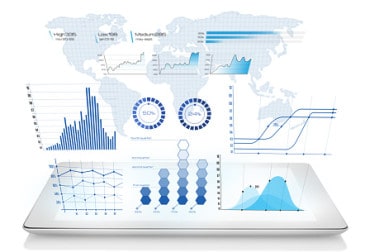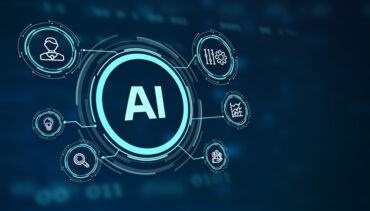
The Hess Collection Winery, part of the Hess Family Wine Estates, is a winery and art museum on the volcanic slopes of Mount Veeder in the Napa Valley. Here’s how the winery used business intelligence tools to get up-to-date, real-time data insights into its daily operations.
Industry:
Wine creation and bottling
Location:
Napa Valley, California
Business Opportunity or Challenge Encountered:
With more than 150 employees helping to produce over 650,000 cases of wine each year, it was crucial for the Hess Collection Winery’s sustainable agricultural methods to match up with its desire for new, sustainable business strategies.
The company needed to ensure that its business practices are continuously improving, effectively and efficiently. However, pulling information together from systems was a time-consuming task that often took weeks. Data was siloed in disconnected databases for each department, so combining shipment and inventory information into a single spreadsheet was a daunting and time-consuming task. Because of this, it was impossible to get an up-to-date view of the entire business with data on which employees could rely.
How This Business Opportunity or Challenge was Met:
To prepare for implementation, Andrew Ridling, Director of Business and Information Systems at the Hess Collection, underwent training to hit the ground running—making this unique approach more than just an installation and digital shift. He built visualizations and went home with a confident understanding of the technical aspects of the TARGIT business intelligence (BI) environment selected for the project. He also gained a solid understanding of the data points and metrics that matter most for Hess so that the company didn’t fall victim to information overload (which commonly results in BI project failure).
The new BI environment allows for immediate views of information across the winery operation. There’s no need to wait for anyone else to pull or edit data because everything is self-service. Users were getting the answers they were looking for right out of the box.
Measurable/Quantifiable and “Soft” Benefits from This Initiative:
Perhaps most impressive is the company’s ability to forecast. In the past, it would take hundreds of hours to create a forecast from the company’s disparate spreadsheets. Today, forecasting is done in minutes, with no risk of human error as there was when numbers were pulled by hand. Also, important key performance indicators (KPIs) such as depletion rates are monitored and measured, giving greater insight into what’s working and what’s not. Depending on the depletion levels the user would like to see, the BI system makes it easy to change dimensions to deliver the right data in an instant.
Previously, this would take days, if not weeks, to change dimensions and print out a new, static, lengthy report. The streamlined process eliminates the back and forth, and the answers that are laid out in the data eliminate debate. Problems are identified and solved faster than ever.
Hess was able to quickly build a cohesive solution with dashboards, reports and alerts, presented in data visualizations that make finding answers easy for all employees—no matter the role or department. Users are able to easily narrow down the business insight from a 30,000-foot view to the most intricate details.
When Ridling first presented the TARGIT interface to the president, he drilled down to the East Coast sales in a demo. There, they saw that an account was down 200 cases for the year. Wanting to know what was going on, the president took that data and immediately called the sales rep for that region.
Since the sales rep hadn’t adopted the BI tool into his daily work life yet, he didn’t even know that cases were down for that one restaurant. Up until that moment, the detail had gone unnoticed. With the knowledge in hand, he could pick up the phone, call the buyer and negotiate.
Today, every department of the company has technically proficient users, along with many information consumers who rely on the data being delivered to them regularly in concise reports and analyses.
Lessons Learned and Advice
All employees at Hess are now capable of using the BI tool to help them with their tasks. This includes the proficient users who spend time creating reports and dashboards as well as the many information consumers in every department who now get the information they need in a fraction of the time—in a way that makes most sense to them.
Hess is able to employ this BI platform for financial research as well. The company has customized the system to manage the company’s pricing system across the country. Employees understand where the money is going, exactly what it’s spent on and if it’s working. Pricing is now understood down to a granular level.
In the future, Hess plans to build a data service layer, covering external elements such as competitive information, weather data, and trends that affect the winery business. The company seeks the ability to pull all of this external data and mash it up with internal company data. Being able to do this on the fly would also let users judge the value of additional data before taking the time and effort to build it into a data cube.
Source: TARGIT
Want more on this topic?
Research from Gartner: Real-Time Analytics with the Internet of Things
From the Center to the Edge: The IoT Decentralizes Computing
For Manufacturers, IoT Means the ‘Internet of Tools’
Becoming an ‘Always On’ Smart Business
Liked this article? Share it with your colleagues using the links below!





























